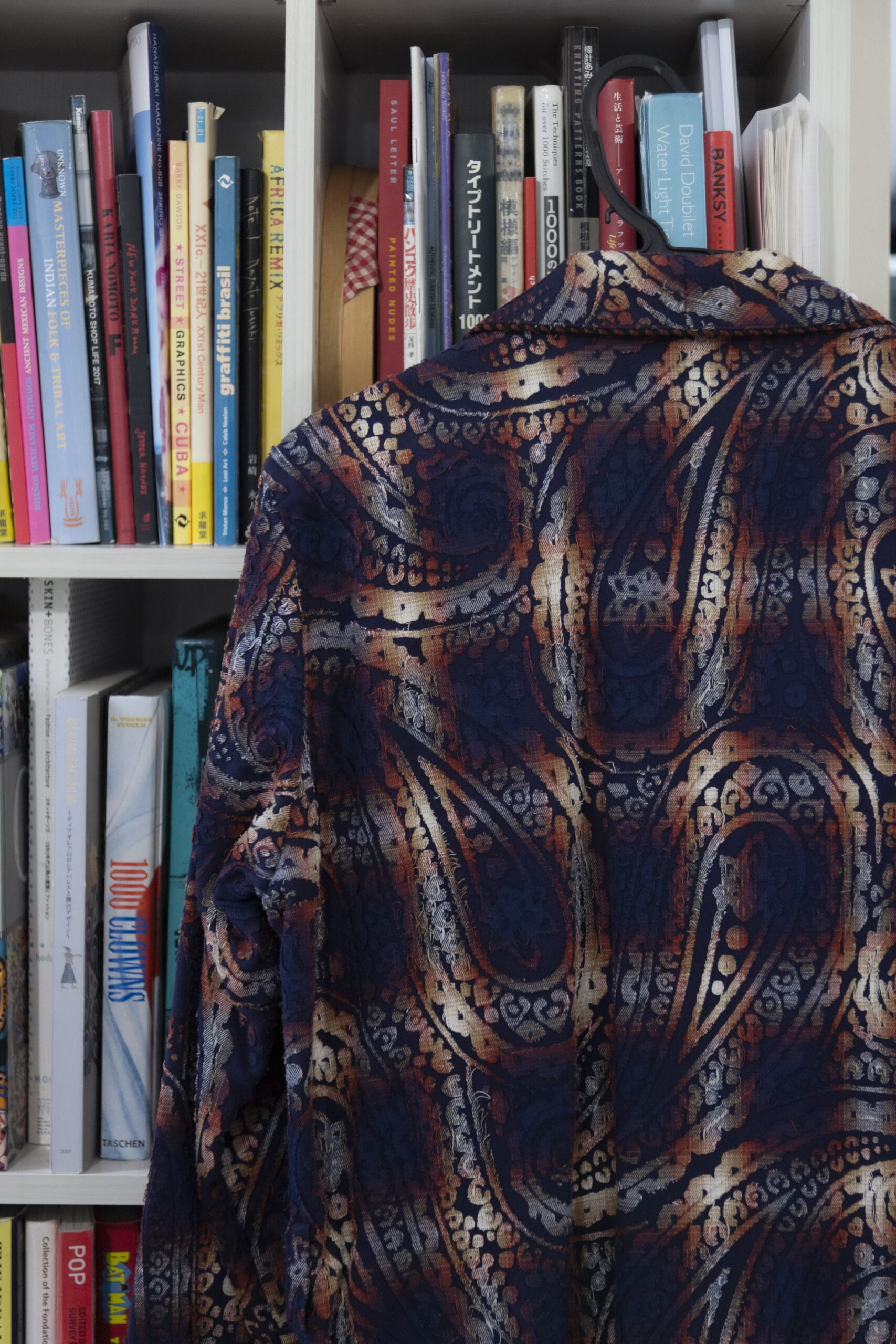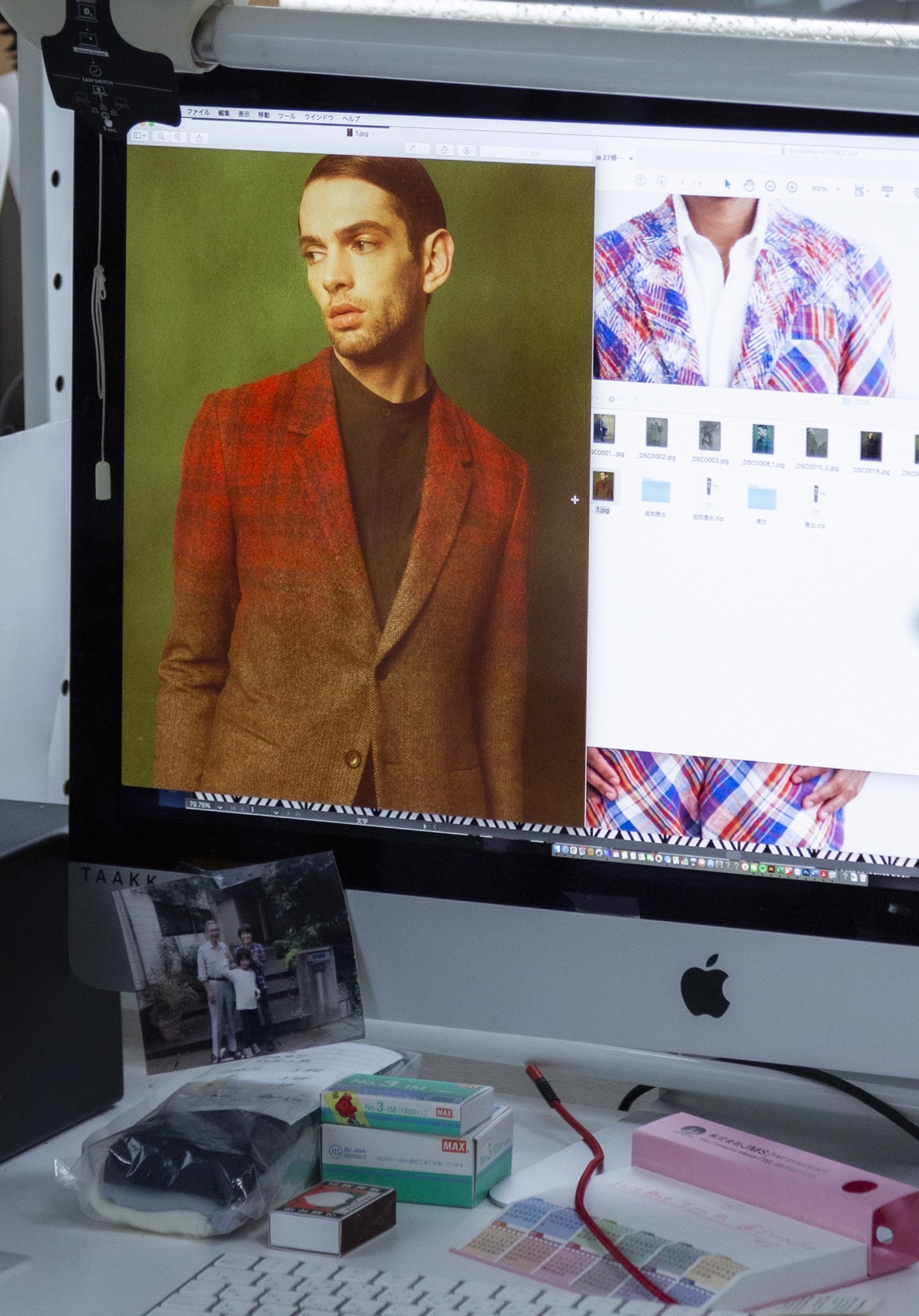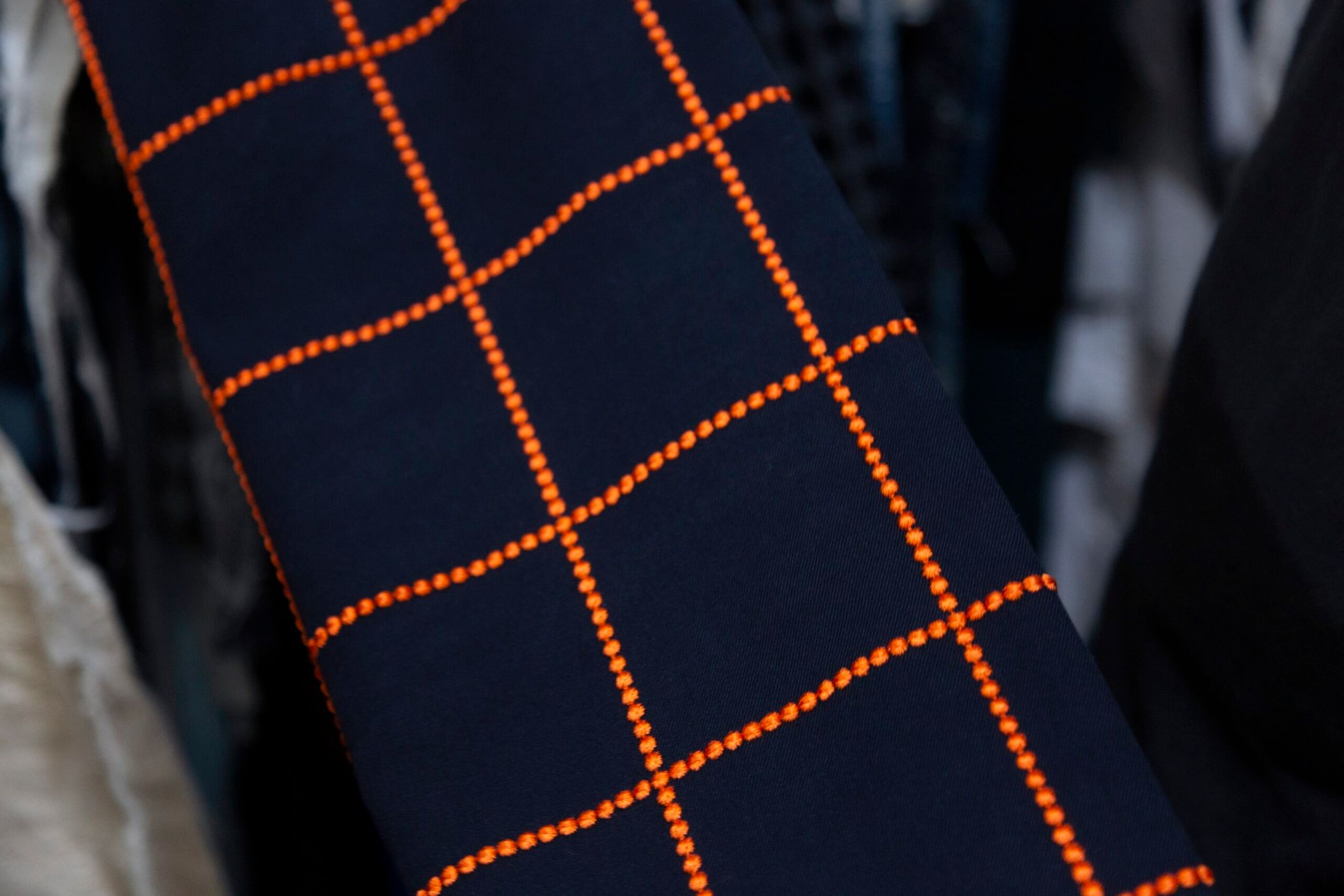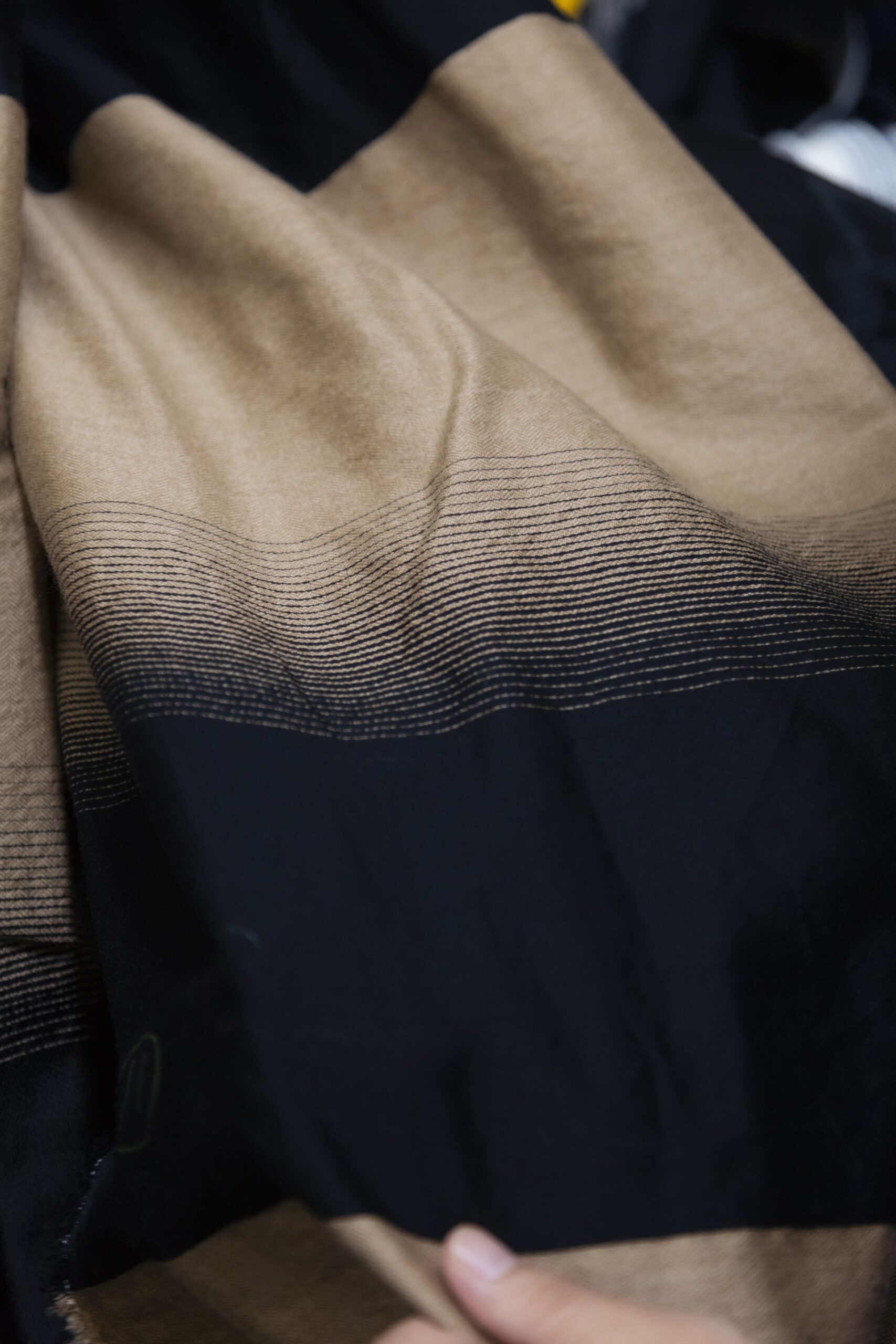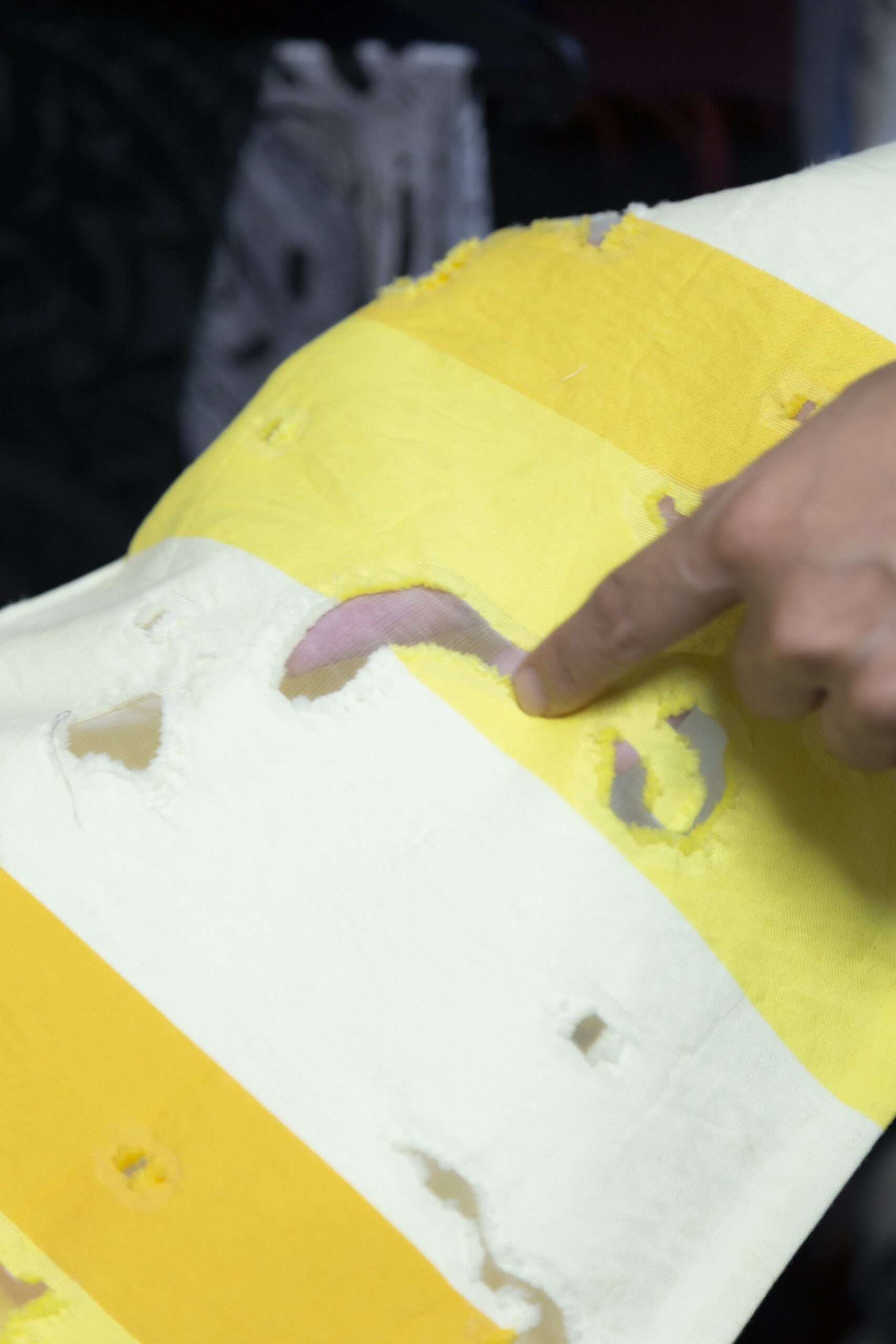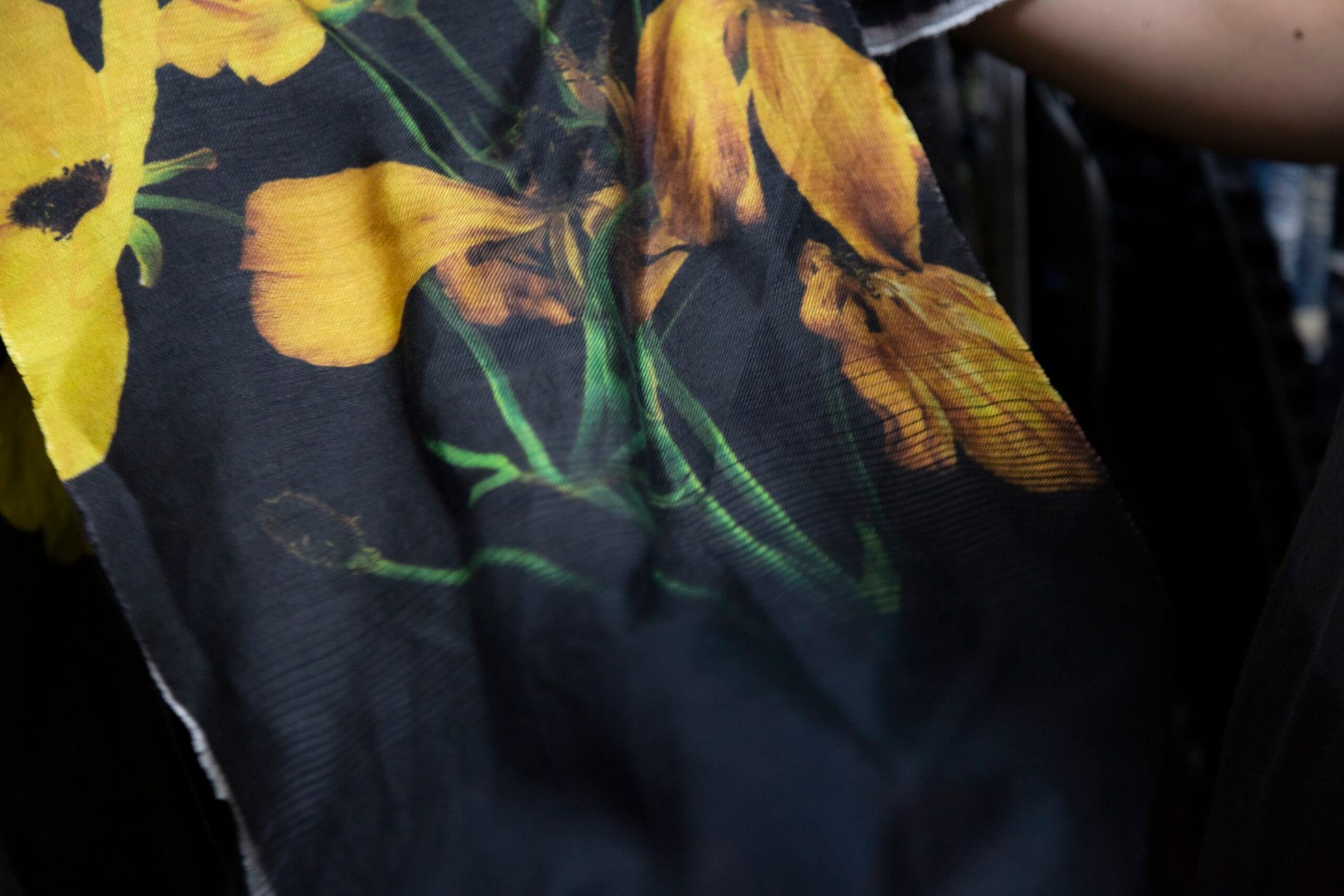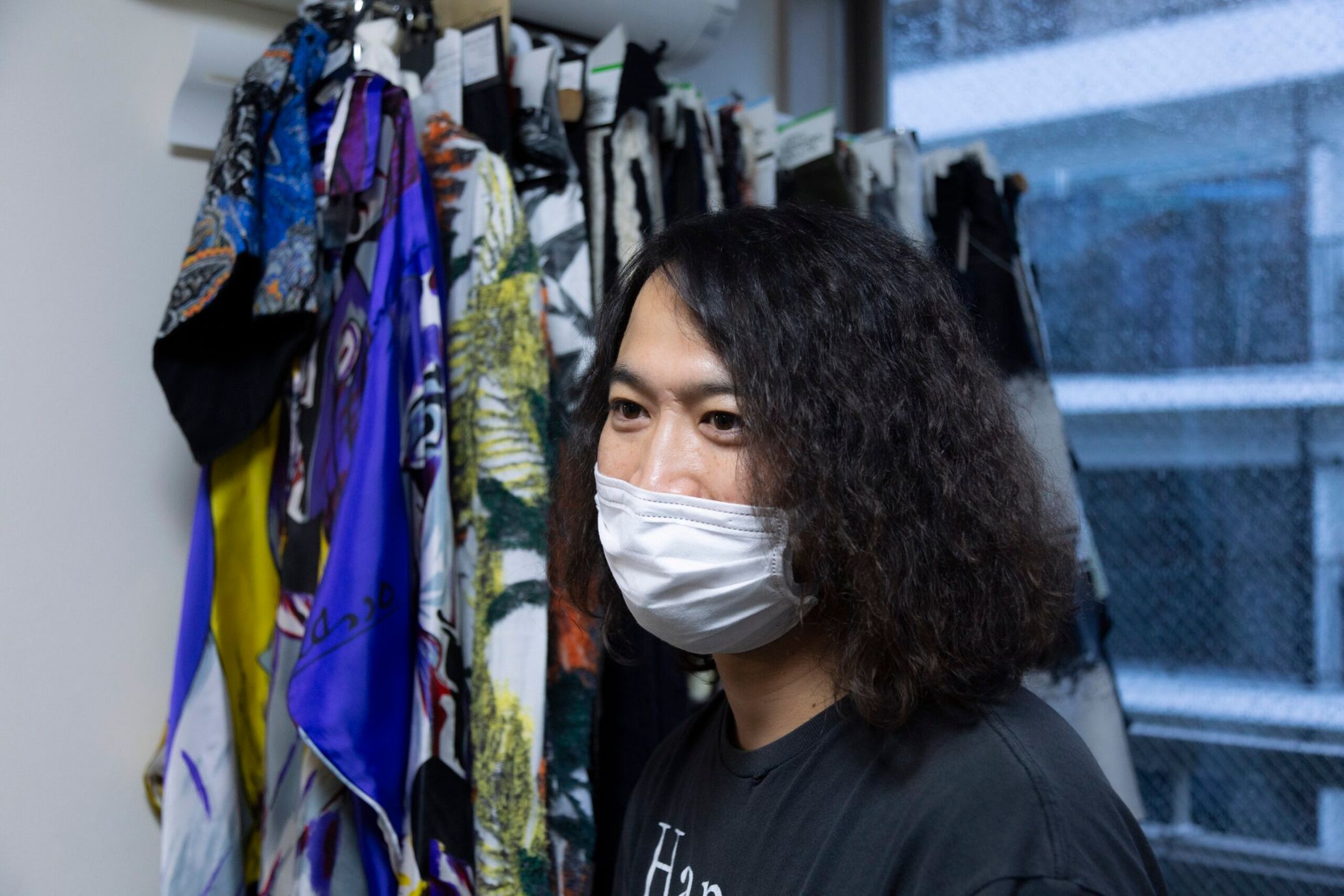There’s something off-kilter about Takuya Morikawa’s brand, TAAKK. Most of the brand’s clothes are closet staples, such as tailored jackets, shirts, trench coats, and bomber jackets. But upon a closer look, one could notice that something is different.
Not only does TAAKK offer quality clothes, but the brand also creates never-before-seen garments by developing original fabrics, which are the foundation and the source of design inspiration. By utilizing a material that changes, making it look like a gradation, the boundary between a jacket and shirt blurs, and two become one. And by distressing denim through weaving, as opposed to adding the effect in a manufactured way, a classic clothing item could reveal a new side. TAAKK’s trait is that while the fabric and clothes, made with top-tier technology, have an off-kilter air, one could easily incorporate them into their wardrobe.
This two-part interview digs into TAAKK’s philosophy behind making clothes, highlighting the brand’s fabrics. In part one, Morikawa talked to us about his past collections and the fabrics that keep evolving while retaining their classic quality.
TAAKK’s debut collection, in which ready-made fabrics were manipulated and reworked into different fabrics
–Did you have a focus on fabrics since you founded TAAKK?
Takuya Morikawa (Morikawa): Yes. I believed in the potential of fabrics and explored how to express them through clothes.
–I heard you worked with ready-made fabrics at first.
Morikawa: I didn’t have money back then and couldn’t ask anyone to weave fabrics from scratch. With that said, I could only make something similar to other brands If I were to patch different ready-made pieces together. For the first two seasons after my debut, I searched for ways to transform already-existing fabrics into something original by manipulating them.
–Which clothing item from your debut collection left an impression on you?
Morikawa: I have such an emotional attachment to this jacket. We superimposed the bias and normal grainlines of the same plaid fabric. Then we thoroughly melted more than half of the bias plaid fabric, thus complexly blending two of the same plaid fabrics. For the following collection, we made a mixed-print jacket by combining a herringbone and taffeta fabric via needle punching. I asked a manufacturer that I’ve been close to since [I previously worked at] Issey Miyake to do it.
–When did you begin creating original fabrics?
Morikawa: I started from my third season, but it was tough. I made some failures too.
–What do you mean by that?
Morikawa: I used all of the ideas and processing techniques I had accumulated. Money, too. I gradually began studying weaving because I needed to think of even newer ideas, but I couldn’t do it as well as I wished. The things you can do with that are more limited than manufacturing clothes.
–I feel like your brand started focusing on creating fabrics with jeans with woven, distressed details.
Morikawa: That means a lot to me. It’s been four or five years since we first introduced that. Usually, people alter jeans after they’re complete. But with this project, I thought we could create something entirely different if we weaved the distressed pattern at the first stages. We converted whiskers, honeycombs, and the faded color that you see when people wear jeans into data and mimicked them using jacquard fabric. We scanned genuine denim to do it, so it doesn’t look weird.
–You make them every season as a staple item.
Morikawa: They didn’t sell well at first. I thought it was such a great project, but it sadly didn’t take off. I kept at it because it frustrated me, and they ended up as a staple (laughs). We still sell them every season by changing them up slightly each time.
2. This series of embroidery of dots in straight lines are also Morikawa’s favorite
Looking for a gem of inspiration
–The series that use fabrics where one color gradates to another are exemplary.
Morikawa: When that was complete, I was over the moon. It made me feel like anything was possible.
–How long did it take to develop that fabric?
Morikawa: It was complete after one collection since I found the gem.
–What do you mean by “gem”?
Morikawa: This is the gem (source of inspiration) of the series. It might’ve been a sample or something that sold in stores. Some shops with weaving supplies have a room with old woven materials. That’s where I tirelessly look for fabrics. It doesn’t look enticing like this, but it’s a gem. I figured the transparent part must also be beneath the yellow part.
–And you applied that to your work?
Morikawa: When I found this, I thought someone could make a transparent bomber jacket. I asked this person to make it with nylon and make it transparent halfway through because I thought it’d be possible. And it went well. We were in the middle of making our spring/summer collection, so they tested making many shirts that go from linen to cotton.
–I didn’t know you started from this sample-ish thing.
Morikawa: What’s important is if something can make me excited. Issey Miyake-san taught me to look for a gem and expand from that. Issey-san told me when I go onsite and find something that has potential, even if it’s a little bit, it’s better to start working on that. I cherish his words.
–So, it’s key to go to different factories and see what you can do.
Morikawa: Yeah. I had the vision for this series from way before. For a long time, I thought it’d be interesting if one fabric could be woven into another, but the weaver I knew couldn’t do it. I looked up different weavers and went to one unannounced. They showed me the stock room, and, low and behold, I found this gem. They also taught me how they made the fabric.
–Having a collaborative relationship with manufacturers is essential.
Morikawa: The people who work in such factories, who give me the time of day to work on weird fabrics, are such characters. They would call me saying, “We made something great!” in a happy tone. Being able to motivate artisans is also a vital skill for designers.
Believing in common sense and putting in the work
–As a brand, what sort of significance does developing materials have?
Morikawa: I believe I’m just doing something we brands should do. Of course, I draw a lot to envision the finished product. I doubt I could accurately ask a patternmaker to make something without understanding how a particular fabric should drape. It’s important to draw nice drawings and decide on the sizing and where to put the seams. But unless I finish doing things I must do as a designer until a product is complete, I feel restless. If I’m going to make clothes, I need to give them my all. I got into this because it’s fun, but I believe in common sense and do my work.
–As a result, unique fabrics have come to make your brand original.
Morikawa: When I worked in the womenswear team at Issey Miyake, I was free to do anything. It was as if we were allowed to develop anything as long as our weekly project presentation went through. There are in-house textile designers at Issey, and I began developing the kind of processed fabrics they wouldn’t create. After I moved to the menswear side and presented my project involving my use of processing technology, I got a good reaction. That sort of thing was still new within menswear. Besides, I thought that was the only thing left to do in fashion. I became independent after a year from that point, and although I had some assurance about developing fabrics, I’m now finally starting to understand it better.
–To me, your spring/summer 2020 collection was a turning point. You showcased a new idea through fabrics and then kept brushing that up from the following collection and onwards.
Morikawa: Right, that might’ve been one catalyst. I received the Fashion Prize of Tokyo (a fashion competition hosted by the Tokyo Metropolitan Government and the Council of Industry-Academia Collaboration on Textiles and Fashion) around that time. Things changed a lot after I showed my collection in Paris. For us humans, a small amount of confidence goes a long way. I felt relieved because of that collection.
–I assume that was one of the catalysts that gave birth to the brand’s TAAKK-ness.
Morikawa: But I’m still trying to chip away.
–At something else?
Morikawa: I want to try developing something else. You know how it’s easy to get aggravated in this day and age? I feel like nothing will change unless I do. Of course, I’ve accumulated the things I’ve done so far, but I also want to do something new that will surprise everyone. Plus, the more excited I get, the more we, as a team, notice the structure of past collections and want to evolve. Until recently, I tried to create wearable silhouettes as much as possible, but from this point onwards, I feel like I could design more clothes by cutting them up. I want to banish my inner voice that tries to put on the brakes, saying, “This is how it’s been done before.”
Photography Kohei Omachi
Translation Lena Grace Suda


